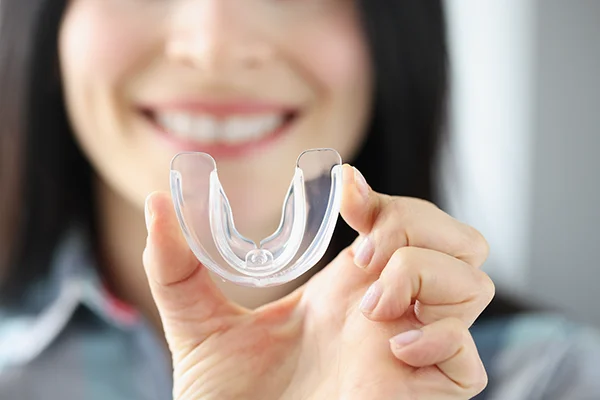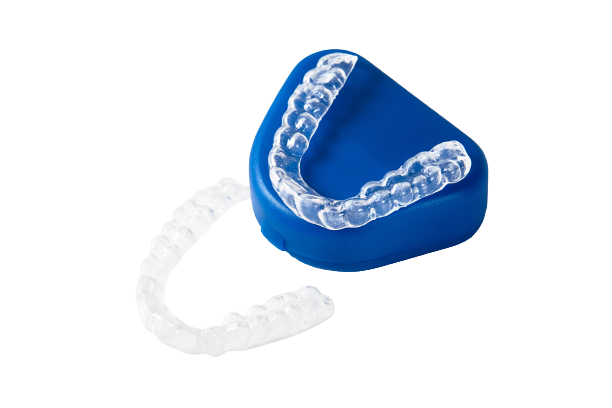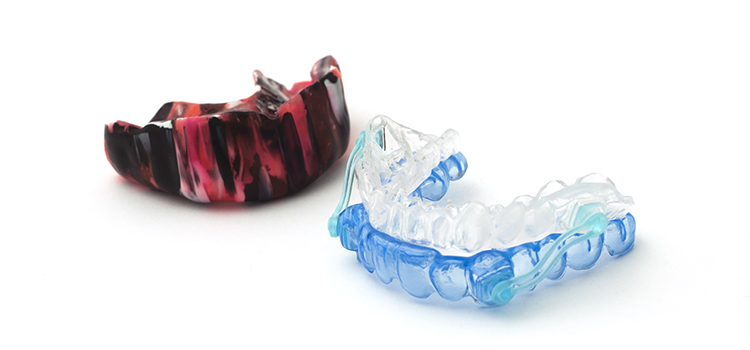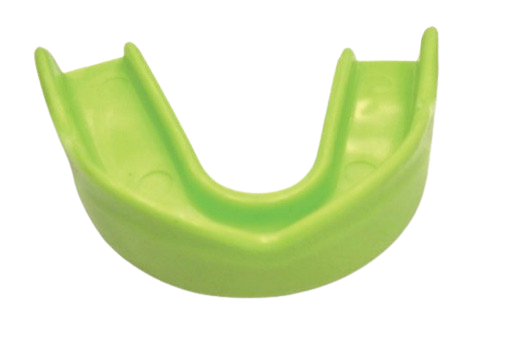Our Services
Occlusal Splint
A mouthguard for clenching, also known as a nightguard or occlusal splint, is a dental appliance designed to protect the teeth and alleviate the effects of teeth clenching or grinding, also known as bruxism. Bruxism can occur during the day or, more commonly, during sleep (sleep bruxism). The mouthguard creates a barrier between the upper and lower teeth, preventing them from coming into direct contact and reducing the damaging effects of clenching and grinding.
Here's how mouthguards for clenching work:
01.
Cushioning and Absorption
The mouthguard is made of a soft and resilient material, such as thermoplastic or acrylic, which cushions the teeth and absorbs the forces generated during clenching or grinding.

02.
Even Distribution of Pressure
The mouthguard helps distribute the pressure and forces exerted by the jaw muscles more evenly across the teeth, reducing the risk of tooth wear and damage.
03.
Protects Tooth Enamel
By preventing direct contact between the upper and lower teeth, the mouthguard protects the enamel from excessive wear and prevents chipping or fracturing of teeth.
04.
Relieves Jaw Muscle Tension
The mouthguard can help relax the jaw muscles by providing a stable and comfortable bite position, reducing muscle tension and associated discomfort.
05.
Reduces Jaw Joint (TMJ) Strain
In some cases, clenching and grinding can lead to strain on the temporomandibular joint (TMJ). A mouthguard can help alleviate this strain and provide relief for individuals experiencing TMJ-related issues.
Types of Mouthguards for Clenching:
The most suitable option may vary depending on an individual’s needs:
01.
Custom-Fitted Mouthguard
A custom-fitted mouthguard is made by a dentist based on an impression of the patient’s teeth. It provides the best fit and comfort and offers superior protection. Custom-fitted mouthguards are more expensive than other options but are highly effective.

02.
Boil-and-Bite Mouthguard
Boil-and-bite mouthguards are available over-the-counter at drugstores. They are made of thermoplastic material that softens when boiled and can be shaped to fit the teeth by biting down on the softened material.

03.
Stock Mouthguard
Stock mouthguards are pre-formed and ready to use out of the package. However, they may not fit as well as custom-fitted or boil-and-bite mouthguards, and they may be less comfortable.

Caring for a Mouthguard for Clenching
Proper care and maintenance of the mouthguard are essential to ensure its effectiveness and longevity.
Here are some tips:
01.
Rinse the mouthguard with cold water before and after use.
02.
Brush the mouthguard with a toothbrush and toothpaste regularly.
03.
Store the mouthguard in a sturdy container when not in use to protect it from damage and bacteria.
04.
Avoid exposing the mouthguard to hot water or direct sunlight, as this can distort its shape.
It’s essential to consult with a dentist if you suspect you have bruxism or are considering using a mouthguard for clenching. A dentist can assess your condition and recommend the most appropriate type of mouthguard to meet your specific needs.
